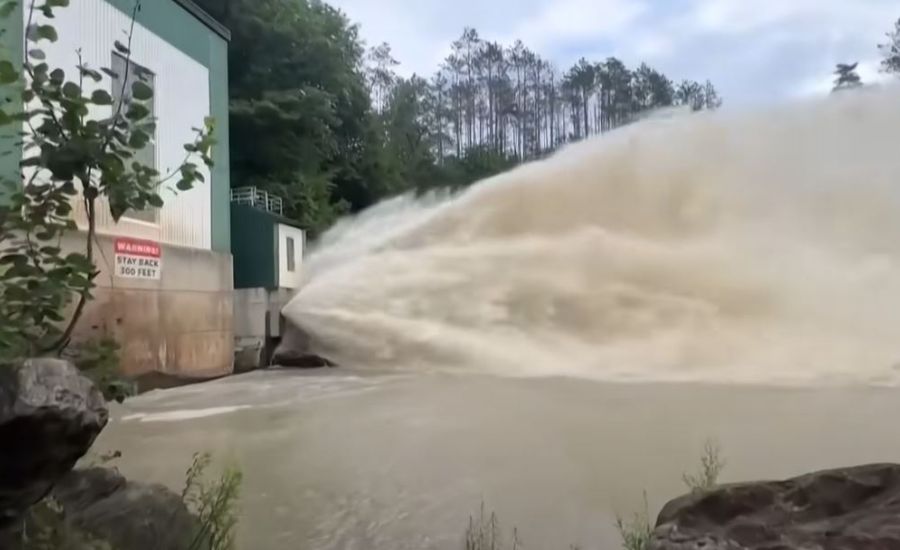Veramont flood: Concerns regarding the hundreds of dams in the state—a third of which are older than a century—have gained additional urgency in light of the most recent flooding in Vermont.

Compared to last year’s floods, when five dams failed and nearly sixty overtopped, this week’s deluge caused by Hurricane Beryl’s remnants wasn’t as bad for the hundreds of dams.
Julian Koster Faces Grooming, Sexual Assault Charges
However, as climate change brings stronger storms and heavier rains, the second major flood in a year raises questions about the sustainability of these structures.
“The many thousands of obsolete dams that remain in our rivers do not provide protection from flooding, despite what many may think,” Andrew Fisk, the northeast regional director for the environmental advocacy group American Rivers, said. “Dams not created specifically for flood protection are regularly full and do not provide storage capacity. And they also frequently direct water outside of the main channel at high velocities, which causes bank erosion and impacts communities.”
More dams in the nation are collapsing or overflowing during intense downpours, mirroring the problem Vermont’s dams face. The second-worst flood in Rapidan Dam’s history occurred last month, severely damaging the 1910 hydroelectric dam located in Minnesota.
The flood also damaged the spillway at Lake Livingston Dam (Texas). The flood occurred about 65 miles northeast of Houston. In the United States, there are about 90,000 dams. According to the U.S. Army Corps of Engineers, at least 4,000 dams are in poor or unsatisfactory condition and could fail, killing people and harming the environment
These dams require maintenance, upgrades, and sometimes even urgent repairs.
Vermont, like the rest of New England, has mostly older, tiny dams that were constructed to store water, power textile mills, or provide irrigation to farms.
These dams are no longer functional, and climate change may bring storms that they were not designed to withstand.
The failures and near-failures of dams were the main reason why the floods in Vermont last year attracted so much attention to them. There was a chance that a dam in the capital, Montpelier, would breach the emergency spillway and flood portions of the town.
372 dams in the state are listed in the National Inventor of Dams, a database maintained by the U.S. Army Corps of Engineers. Of those, 62 are classified as high hazard, meaning that a failure of the dam could result in the loss of life. Ten of those received a poor condition rating, indicating the need for corrective action.
According to state officials, 417 dams are actually regulated, and hundreds more are too small or pose too little of a risk to be regulated.
Following the storms of the previous year, all of the state’s dams underwent a quick inspection, and storm damage stabilization and repair cost more than $1.5 million.
“The team had never been faced with a situation of, you know, 8 inches of widespread rain across essentially the entire state of Vermont,” Neil Kaman, Director of the Division of Water Investments (Vermont), said. “It stressed all of the facilities that the state of Vermont owns and that the dam safety team manages but filled up hundreds of dams, caused the failures that you know about, and created a whole bunch of unknown uncertainties out there on the landscape in terms of downstream risk due to, you know, prospective dams having been destabilized.”
The legislature authorized the addition of four staff members to the dam safety program, increasing its total to nine. It also increased funding for the program from $200,000 to $4 million. Dam removal, restoration, or emergency risk reduction are all possible uses for those funds.
At a news conference on Friday, Julie Moore, the secretary of the Vermont Agency of Natural Resources, reported that inspections had revealed that the Waterbury Reservoir’s levels “are stabilizing with plenty of storage remaining” and that the flood control reservoir in the Winooski River Valley “continue to do their job well.”
For the area that stretches from Barre to Essex, flood control is largely dependent on those dams as well as the East Barre Dam.
She added that “no damage was identified” after officials had finished inspecting “seven particularly at risk” dams in the state’s northern region.
This year’s floods occurred too soon for the extra funding and personnel to make a difference. However, Kamman stated that the team’s stronger reaction this time around was influenced by their experience handling the flood from the previous year.
“The biggest difference between the response this year and last year is the fact that we had the game plan worked out for a widespread event that would stress a large number of facilities all at once,” he
said.